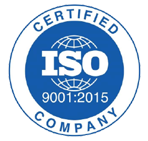Geocell material is an advanced geosynthetic solution designed for soil stabilization, erosion control, and load distribution. It is widely used in infrastructure projects such as roads, embankments, and retaining walls due to its ability to enhance soil strength and reduce maintenance costs. The interconnected honeycomb structure of geocell material confines soil, preventing displacement and ensuring long-term stability.
This guide explores everything you need to know about geocell material, including its composition, benefits, applications, and how to choose the right type for your project. We will also cover essential installation guidelines and answer frequently asked questions. Whether you are an engineer, contractor, or project manager, understanding geocell material can help you make informed decisions for your construction needs.
What is Geocell Material?
Geocell material is a three-dimensional cellular confinement system made from high-density polyethylene (HDPE), polypropylene, or other durable polymers. These interconnected cells create a flexible yet strong structure that reinforces soil and distributes loads efficiently. The design of geocell material helps prevent soil erosion, improve load-bearing capacity, and enhance the longevity of infrastructure.
Key Characteristics of Geocell Material
- Material Composition: Most geocell material is made from high-density polyethylene (HDPE) due to its exceptional durability and resistance to environmental stressors. Some variations use polypropylene for increased chemical resistance.
- Cellular Structure: The honeycomb-patterned design provides high tensile strength, allowing for effective soil confinement. The cells can expand and contract based on ground conditions.
- Load Distribution: When filled with soil, aggregate, or concrete, geocell material creates a stable foundation that distributes loads more evenly, preventing localized stress and deformation.
- Environmental Adaptability: Geocell material can be used in various terrains, including sandy, clayey, and rocky soils. It is also effective in high-moisture environments such as riverbanks and wetlands.
- Versatile Usage: Whether for roads, embankments, railways, or even pedestrian pathways, geocell material adapts to different construction needs, reducing costs and improving structural longevity.
The effectiveness of geocell material lies in its ability to enhance soil stability while being a cost-effective and sustainable solution for modern construction challenges..
Key Benefits of Geocell Material
Enhanced Load Distribution
One of the most significant advantages of geocell material is its ability to distribute loads over a wider surface area. This function is particularly beneficial in road and railway construction, where heavy loads are constantly applied. Without proper load distribution, roads and railways experience rutting, cracking, and premature wear. Geocell material ensures that the stress on the soil is reduced, enhancing the overall durability of the structure.
Additionally, this feature is crucial in foundation engineering, where weak subgrades can lead to settlement issues. By using geocell material, engineers can reinforce weak soils without extensive excavation or costly material replacements.
Soil Erosion Control
Soil erosion is a major challenge in construction, particularly in regions prone to heavy rainfall, flooding, or strong winds. Geocell material acts as a barrier against soil displacement by confining loose particles within its structure. This prevents soil loss and maintains the integrity of embankments, slopes, and coastal areas.
In steep terrain, geocell material is especially beneficial as it reduces surface runoff and improves water absorption. The use of vegetation in combination with geocells further enhances erosion control by stabilizing the soil with plant roots. This is why geocells are frequently used in environmentally sensitive projects such as riverbank restoration and green infrastructure development.
Increased Structural Strength
Soil confinement provided by geocell material significantly improves the bearing capacity of the ground. This is essential in applications such as bridge abutments, retaining walls, and airport runways, where high stability is required. The interlocking structure of geocell material prevents lateral soil movement, reducing the risk of landslides and subsidence.
Cost-Effective Solution
Compared to traditional soil stabilization methods, geocell material minimizes the need for extensive excavation, high-cost materials, and deep foundations. This leads to significant cost savings in infrastructure projects. Additionally, geocells require minimal maintenance, further reducing long-term expenses.
Eco-Friendly and Sustainable
As environmental concerns grow, sustainable construction practices have become a priority. Many geocell material products are manufactured using recycled polymers, reducing plastic waste and promoting sustainability. Furthermore, geocells help support vegetation growth by stabilizing soil, making them an excellent choice for eco-friendly infrastructure projects.
Versatile and Flexible Application
The adaptability of geocell material makes it suitable for a wide range of applications, from heavy-duty road construction to simple landscaping projects. It can be used with different types of fill materials, including sand, gravel, and concrete, allowing for customized solutions based on project requirements.
Durability and Long-Lasting Performance
Designed to withstand extreme weather conditions, geocell material offers a long lifespan, often exceeding 50 years. It is resistant to UV exposure, chemical degradation, and mechanical wear, ensuring reliable performance over decades.
Common Applications of Geocell Material
Road and Railway Reinforcement
In road and railway construction, geocell material strengthens the subgrade, preventing deformation due to heavy traffic loads. It reduces potholes, rutting, and cracking, extending the lifespan of transportation infrastructure.
Geocells are also used in unpaved roads, temporary access roads, and military roads, where rapid installation and durability are required.
Slope and Embankment Protection
Steep slopes and embankments are vulnerable to landslides and soil erosion. Geocell material stabilizes these structures by holding soil in place, improving slope integrity. When combined with vegetation, geocells create green retaining walls that blend into the natural landscape while enhancing stability.
Retaining Wall Construction
Retaining walls made with geocell material offer a cost-effective alternative to concrete and stone walls. The cellular structure reduces lateral soil pressure, preventing wall failure and improving overall durability. These geocell walls are commonly used in road embankments, bridge abutments, and landscaping projects.
Landfill and Erosion Control
In landfill projects, geocell material prevents soil erosion and helps stabilize waste containment areas. It also plays a vital role in erosion control for riverbanks, wetlands, and coastal regions by reinforcing the ground and minimizing soil displacement.
Desert and Coastal Protection
In desert environments, geocell material prevents shifting sands from encroaching on roads and settlements. In coastal applications, it stabilizes shorelines by reducing wave impact and preventing sand loss.
Pipeline and Channel Protection
Geocell material is used to reinforce the ground around pipelines, drainage channels, and irrigation systems. By preventing soil erosion, it helps maintain the integrity of underground and surface water infrastructure.
How to Choose the Right Geocell Material
Selecting the right geocell material depends on several factors:
- Load-Bearing Capacity – Consider the weight and traffic loads the geocell must support. For heavy-duty applications, opt for high-strength geocells.
- Material Type – HDPE geocells offer superior durability and flexibility, while polypropylene geocells provide enhanced chemical resistance.
- Cell Depth and Size – Deeper cells provide better soil confinement and are recommended for high-stress areas.
- Certifications and Standards – Ensure the geocell material meets industry standards such as ASTM, ISO, or CE to guarantee quality and performance.
Installation Best Practices
Site Preparation
- Remove debris, level the ground, and ensure proper drainage before installation.
- Stabilize soft soil areas with a suitable sub-base layer if needed.
Geocell Placement
- Expand the geocell panels and anchor them using stakes or fasteners.
- Ensure proper alignment to maintain uniformity.
Filling Process
- Fill the geocells with the appropriate material (soil, gravel, or concrete).
- Compact the fill material to ensure stability and durability.
Final Inspection
- Verify proper installation and check for any misalignments.
- Conduct load testing for heavy-duty applications if necessary.
Why Choose Terrain Geoinfra Limited for Your Geocell Solutions?
Terrain Geoinfra Limited offers high-quality geocell material tailored to meet diverse construction and engineering needs. With industry-leading standards, expert support, and a reliable supply chain, they provide customized solutions for infrastructure projects.
Contact Terrain Geoinfra Limited today for durable and efficient geocell solutions.
Frequently Asked Questions
Q1. What is geocell material used for?
Q3. Can geocell material be used in wet environments?
Q5. How does geocell material reduce construction costs?
Q7. Can geocell material be used for residential projects?
Q2. How long does geocell material last?
Q4. Is geocell material environmentally friendly?
Q6. What types of projects benefit from geocell material?
Q8. Where can I buy high-quality geocell material?
Related Posts
Rockfall Protection Mesh Price: What You Need to Know in 2025
Rockfall Protection Mesh Price: What You Need to Know in 2025 When it comes to…
How Rockfall Protection Works: Engineering Solutions to Safeguard Infrastructure and Lives
How Rockfall Protection Works: Engineering Solutions to Safeguard Infrastructure and Lives Rockfall protection works are…



